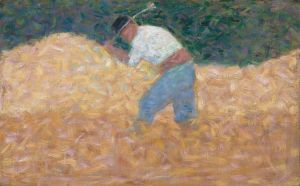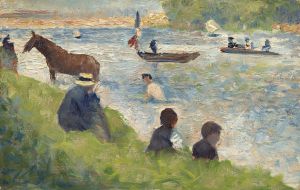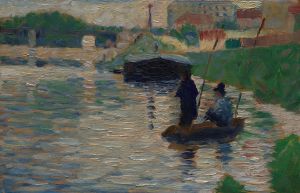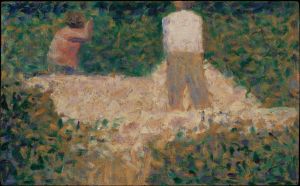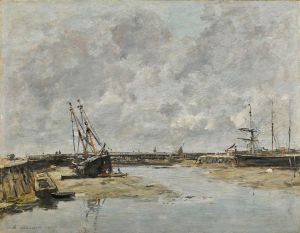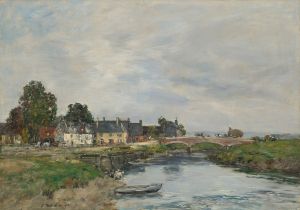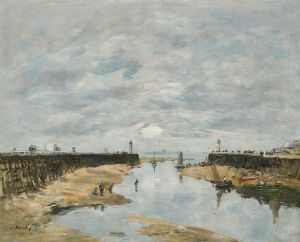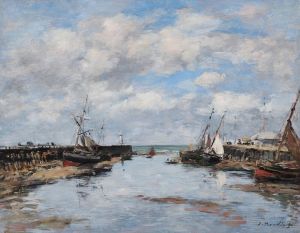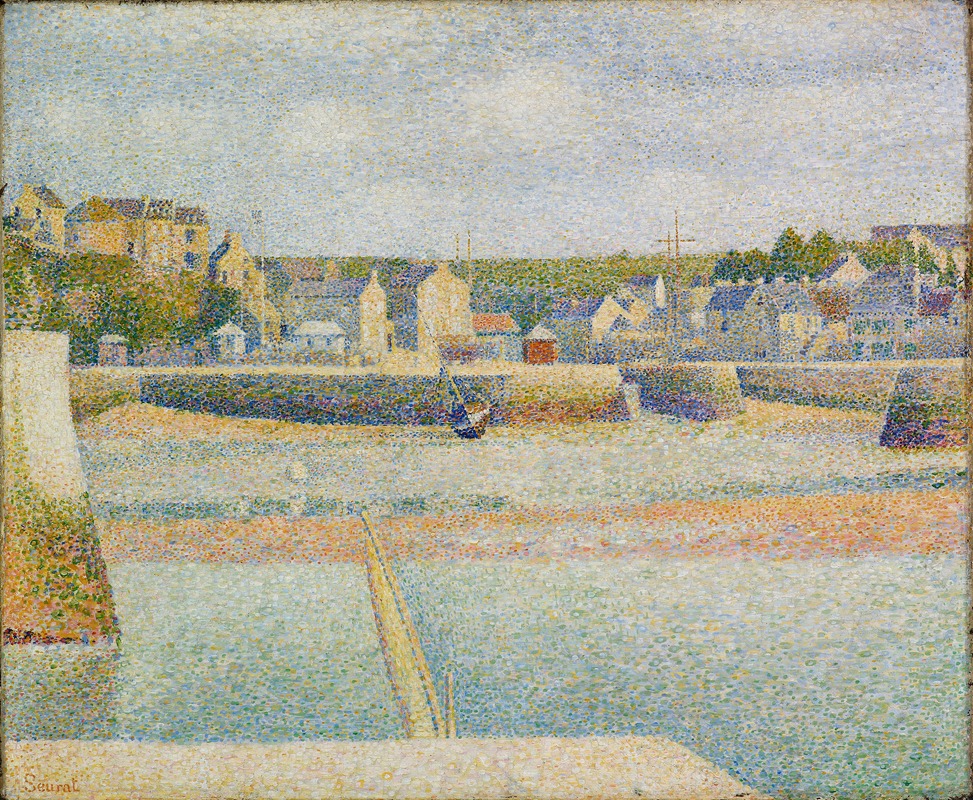
Port-en-Bessin, The Outer Harbor
A hand-painted replica of Georges Seurat’s masterpiece Port-en-Bessin, The Outer Harbor, meticulously crafted by professional artists to capture the true essence of the original. Each piece is created with museum-quality canvas and rare mineral pigments, carefully painted by experienced artists with delicate brushstrokes and rich, layered colors to perfectly recreate the texture of the original artwork. Unlike machine-printed reproductions, this hand-painted version brings the painting to life, infused with the artist’s emotions and skill in every stroke. Whether for personal collection or home decoration, it instantly elevates the artistic atmosphere of any space.
"Port-en-Bessin, The Outer Harbor" is a painting by the French artist Georges Seurat, created in 1888. Seurat is renowned for pioneering the technique known as Pointillism, a method of painting in which small, distinct dots of color are applied in patterns to form an image. This technique is a branch of Impressionism and is also referred to as Divisionism.
The painting depicts the outer harbor of Port-en-Bessin, a small fishing village located on the Normandy coast of France. This area is known for its picturesque scenery and maritime activity, which Seurat captured with meticulous attention to detail and color. The composition of the painting is characterized by its serene and balanced portrayal of the harbor, with boats, water, and the surrounding landscape rendered in Seurat's signature style.
Seurat's use of Pointillism in "Port-en-Bessin, The Outer Harbor" demonstrates his scientific approach to color and light. By placing tiny dots of pure color next to each other, he relied on the viewer's eye to blend them, creating a luminous and vibrant effect. This method was influenced by contemporary theories of color and optics, particularly those of Michel Eugène Chevreul and Ogden Rood.
The painting is part of a series of works that Seurat created during his stay in Port-en-Bessin in the summer of 1888. During this period, he produced several views of the harbor and its surroundings, each capturing different aspects of the light and atmosphere. These works are considered significant examples of Seurat's mature style and his continued exploration of Pointillism.
"Port-en-Bessin, The Outer Harbor" is notable for its calm and orderly composition. The horizontal lines of the harbor and the vertical masts of the boats create a sense of stability and structure. The use of light and shadow, along with the careful placement of color dots, gives the painting a sense of depth and dimension. The overall effect is one of tranquility and harmony, reflecting Seurat's interest in creating a sense of timelessness and order in his work.
The painting is housed in the Musée d'Orsay in Paris, which holds an extensive collection of Impressionist and Post-Impressionist masterpieces. It is considered one of Seurat's important works and is frequently studied for its innovative technique and its contribution to the development of modern art.
Georges Seurat (1859-1891) was a leading figure in the Post-Impressionist movement. His work laid the groundwork for various modern art movements, including Neo-Impressionism and Cubism. Despite his short life, Seurat's influence on the art world was profound, and his meticulous approach to painting and color theory continues to be celebrated and studied.
In summary, "Port-en-Bessin, The Outer Harbor" exemplifies Georges Seurat's mastery of Pointillism and his dedication to exploring the scientific principles of color and light. The painting captures the serene beauty of a small French harbor with precision and elegance, making it a significant work in the history of art.






